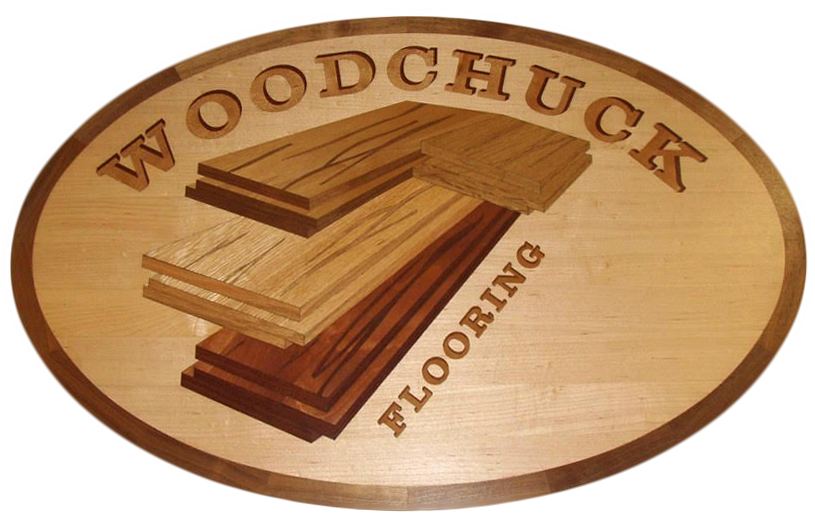Choosing the right product
Know Your Wood Species
Most engineered hardwood products consist of one of five common wood species: walnut, maple, red oak, white oak, and hickory. Each type of wood comes with its advantages and drawbacks. Deciding exactly what you need out of your wood flooring will help you choose the best wood species for your project. For example, high activity areas such as hallways or entrances fare better with a harder wood like hickory or maple engineered hardwood flooring. This is also a great option if you have little kids or pets who might dent and scratch your floors over time. If you’re designing a quieter space, softer woods like walnut can provide more comfort beneath your feet.
It’s also a good idea to keep the room’s design and color scheme in mind when choosing a wood species. Do you want warm or cool undertones in your flooring? Do you want a rich and unique grain pattern, or something more subtle and modern? These questions will help you find a wood species that suits the style of room you have in mind.
Choose Your Grade
While the type of wood you use affects the knots, streaks, and other markings in your floor planks, the grade you choose will also help you achieve the perfect appearance. Character markings help make every board of engineered hardwood flooring unique. They can add a lot of style and personality to a room; however, they don’t fit with every design. While a knotted floor with heavy grain patterns looks great in a country home, it might not give the right impression in an office meeting room. Generally speaking, more character markings offer an organic and rustic appearance, while fewer character markings support a sleek and modern look. The range of hardwood flooring grades includes Clear Grade, Select Grade, #1 Common Grade, #2 Common Grade, and Cabin Grade, with Clear Grade having the least amount of character markings and Cabin Grade having the most.
Wear Layer Thickness
How does engineered hardwood mimic the appearance of solid hardwood so well? The answer lies in the wear layer. This is the top layer of your engineered hardwood planks. It consists of real hardwood, which is why it has the same color, grain, and character markings as wood. However, this wear layer is only one to four millimeters thick. The thickness of your wear layer determines how often you can sand down and refinish your engineered hardwood floors. A 1mm-thick wear layer won’t hold up against sanding, but a 4mm-thick layer can take a few refinishes over its lifespan. If your home sees a lot of activity, or if you simply want your engineered hardwood flooring to last through the decades, a thicker wear layer is your best option.
Plank Dimensions
Once you know what each engineered hardwood floor plank consists of, it’s time to think about dimensions. The width and length of your floor planks play a major role in the overall look of a room. For example, floors that have uniform planks look more streamlined and contemporary. Meanwhile, alternating plank width and length creates more movement and character in a room. Keep the size of your space in mind as well. More expansive rooms will want wider, longer planks. This provides fewer seams to distract the eye and makes installation easier, as you don’t have to place nearly as many boards.
Finish Right
A finishing coat acts as a seal on engineered hardwood. The right finish adds a smooth and beautiful final touch while protecting the floor from daily wear and tear. As you explore your finish options, keep both the appearance and functionality of the room in mind. Certain finishes work better to conceal dirt and debris, while others hold up better against high traffic. Finishes range from glossy to dull. On the dull end of the spectrum is a matte finish, which creates a smooth floor that hides scratches and dents well. Next is a satin finish. This style offers a little more gleam than matte finishes, but it doesn’t reflect as much light as semi-gloss or glossy floors. Glossy floors, which offer the most gleam, create a sophisticated appearance that takes more maintenance than other finishes. Both satin and semi-gloss finishes offer a balanced floor. The light they reflect works to conceal dirt, pet hair, and other debris on your floors. However, they aren’t as shiny as glossy floors, and they don’t always last as long as matte floors.
Pick an Installation Method
Once you’ve used this guide on how to choose the right engineered hardwood flooring to pick out the perfect floors for your project, your last step is to choose an installation method. There are four main methods of installing your engineered hardwood floors: gluing, nailing, stapling, and floating. The first three methods are different ways to attach the boards to the subfloor. In floating installation, however, the boards click together and “float” over the subfloor. The space you’re working in and the type of subfloor beneath the room will help determine which installation method is best. Savvy DIYers can install their engineered hardwood floors themselves. However, a professional installation guarantees quality and helps prolong the life of your floors.
